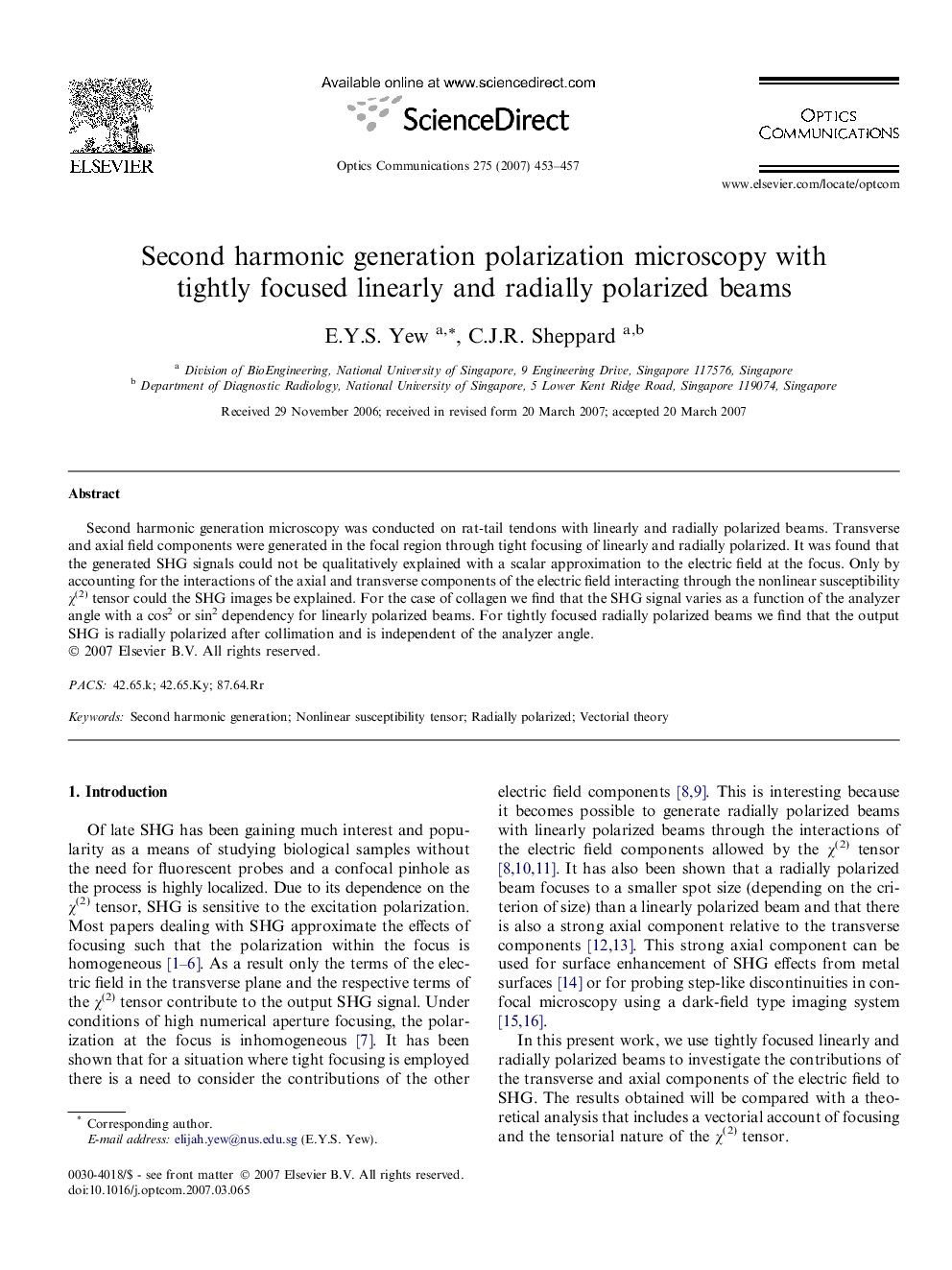| Article ID | Journal | Published Year | Pages | File Type |
|---|---|---|---|---|
| 1541535 | Optics Communications | 2007 | 5 Pages |
Second harmonic generation microscopy was conducted on rat-tail tendons with linearly and radially polarized beams. Transverse and axial field components were generated in the focal region through tight focusing of linearly and radially polarized. It was found that the generated SHG signals could not be qualitatively explained with a scalar approximation to the electric field at the focus. Only by accounting for the interactions of the axial and transverse components of the electric field interacting through the nonlinear susceptibility χ(2) tensor could the SHG images be explained. For the case of collagen we find that the SHG signal varies as a function of the analyzer angle with a cos2 or sin2 dependency for linearly polarized beams. For tightly focused radially polarized beams we find that the output SHG is radially polarized after collimation and is independent of the analyzer angle.
